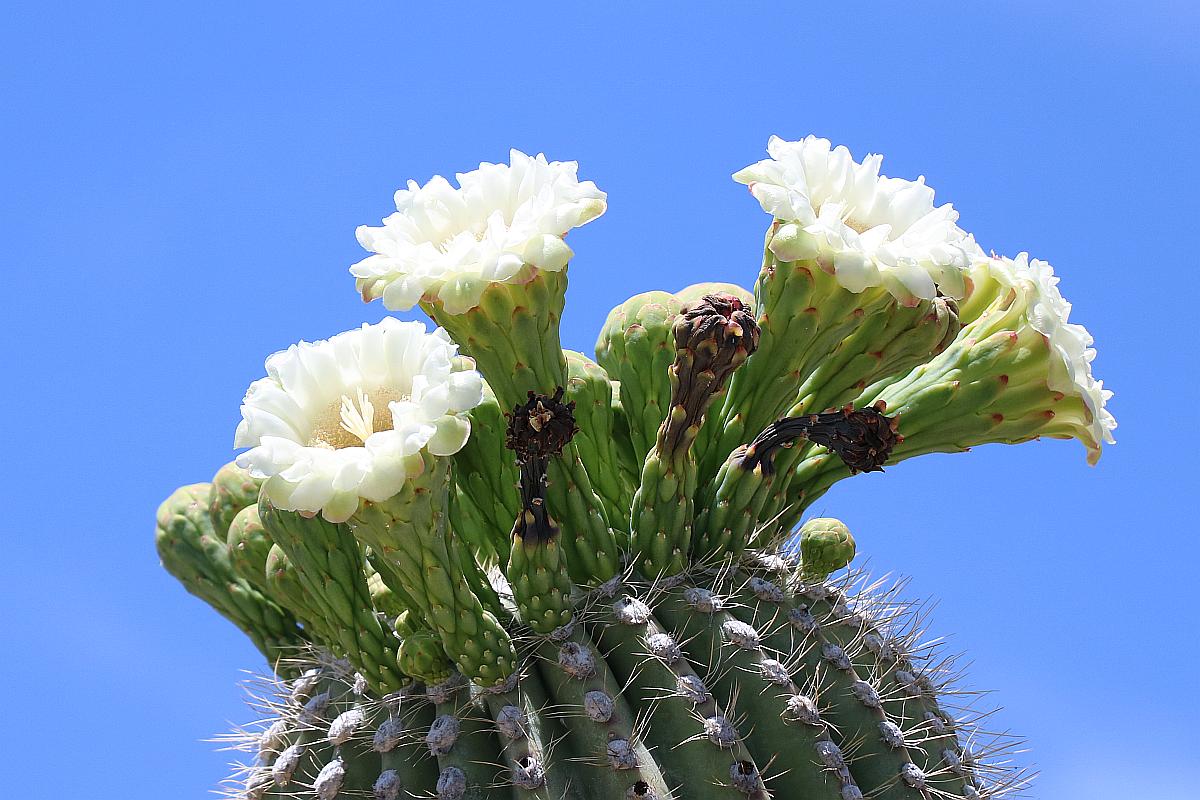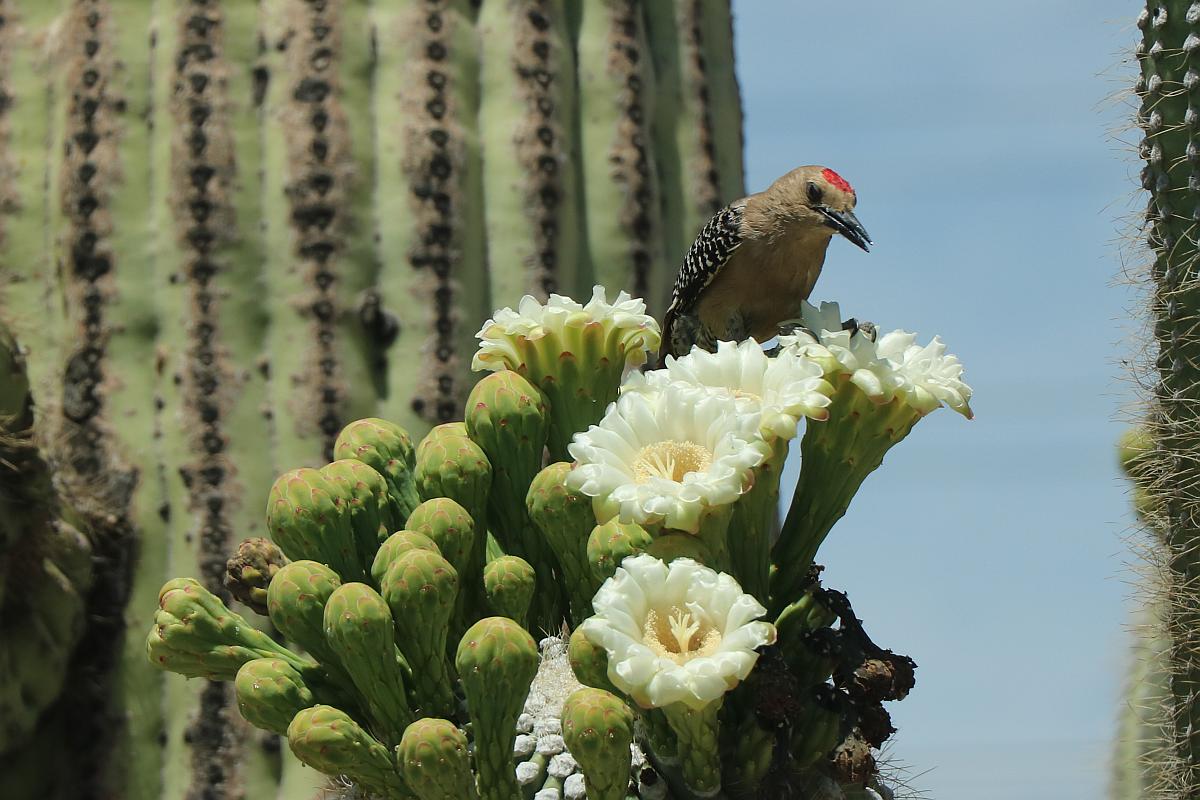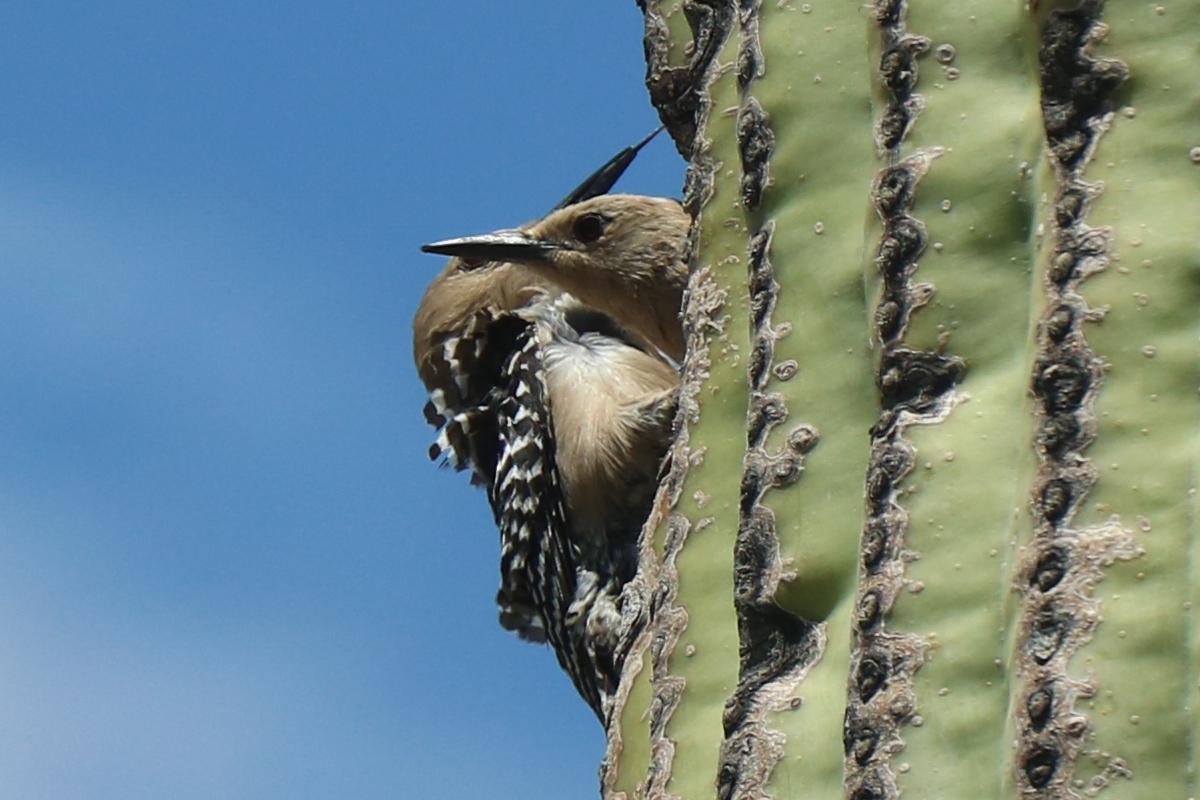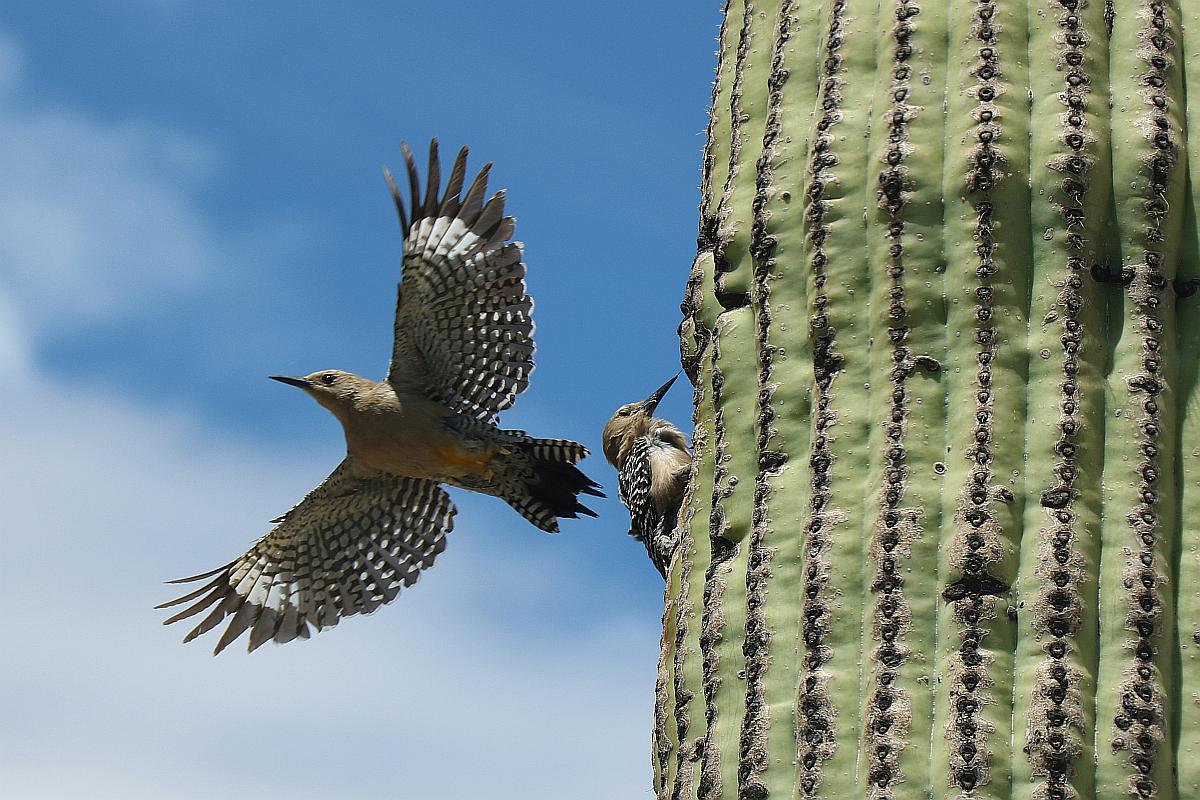DrJim, at the Every Blade of Grass blog, posted an interesting article on the appearance of a Northern Flicker Woodpecker in their yard in northern Colorado. Since we have our share of woodpeckers here in mid-central Arizona, I thought I would post about them. We see mostly Gila Woodpeckers but occasionally see Gilded Flickers too.
Images: Woodpeckers – Click on any image to enlarge. Left and right images credit me. Center image credit Damsel
The image at the left shows a Gila Woodpecker couple in/on the mesquite tree directly across the road in front of our house. We have been seeing them having activity there since march or so. The image in the center is of a Gilded Flicker flushing a House Finch off of our backyard feeder. On the right is the male of another Gila Woodpecker couple perched adjacent to their hole in our big saguaro by the garage. We just noticed woodpecker activity in the saguaro over the past month.
One of the most interesting things to us in our retirement home is the desert wildlife. We are in a semi-rural area where these critters abound. Just this morning, we observed a Gambel’s Quail pair and their five or six little offspring on the retention wall behind the RV Drive as we were eating breakfast. Unfortunately, by the time the cameras came out, the birds were elsewhere. Maybe another time.
We haven’t been really good about regular blogging lately, but between the two of us, we get some really good photos of our desert wildlife and I think we might resume putting some of those up from time to time. Plus, it is springtime and Flowers are in bloom. Damsel has a bunch of those that we should share.

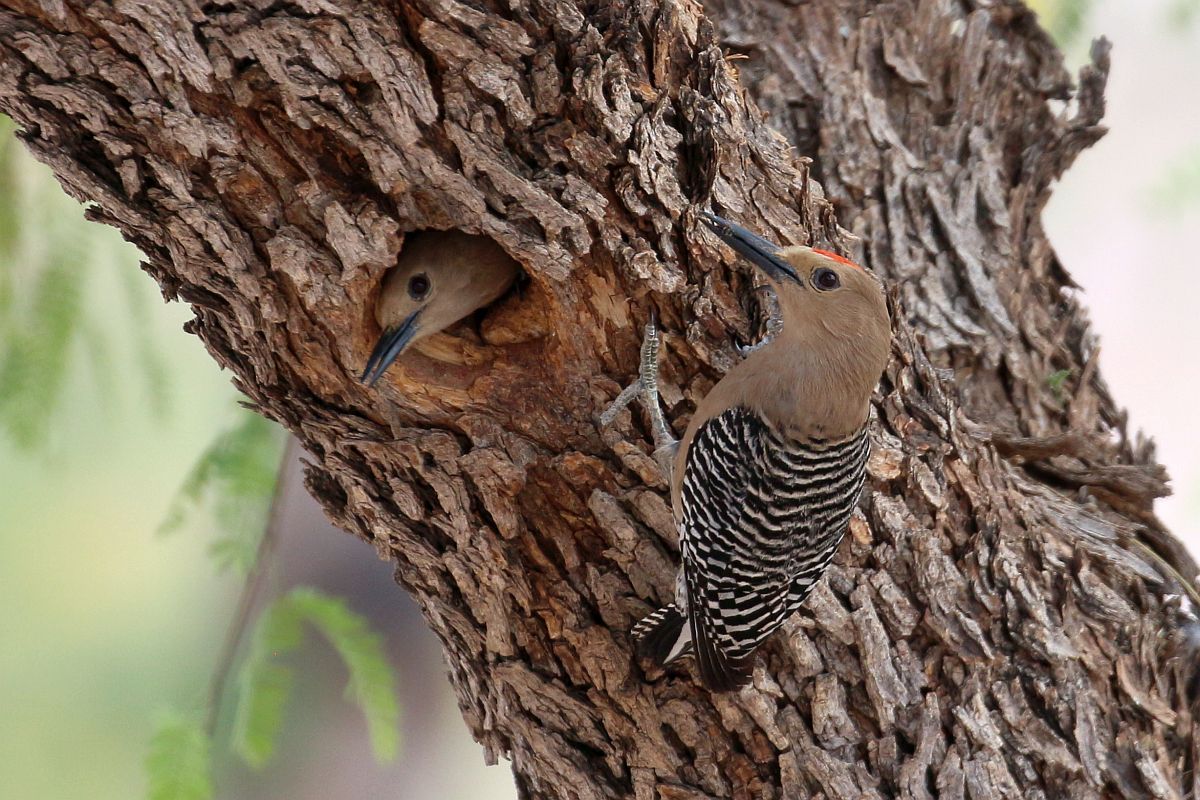
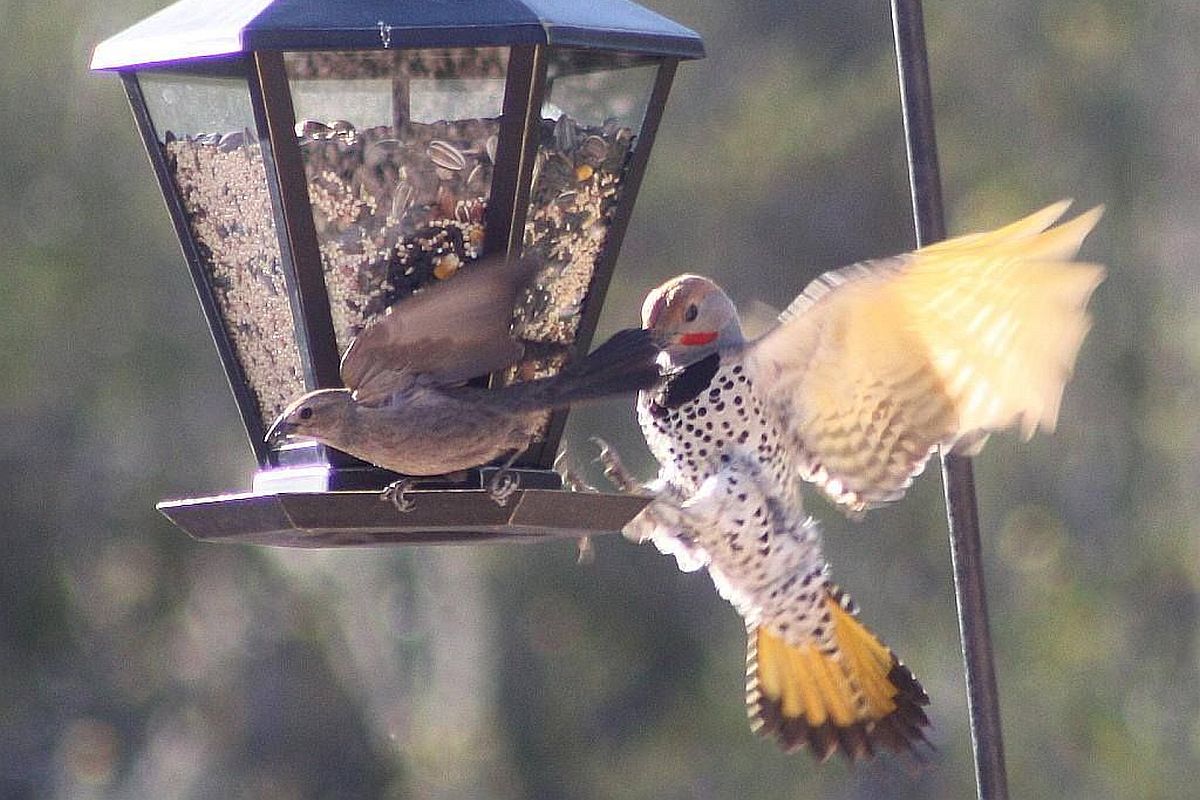
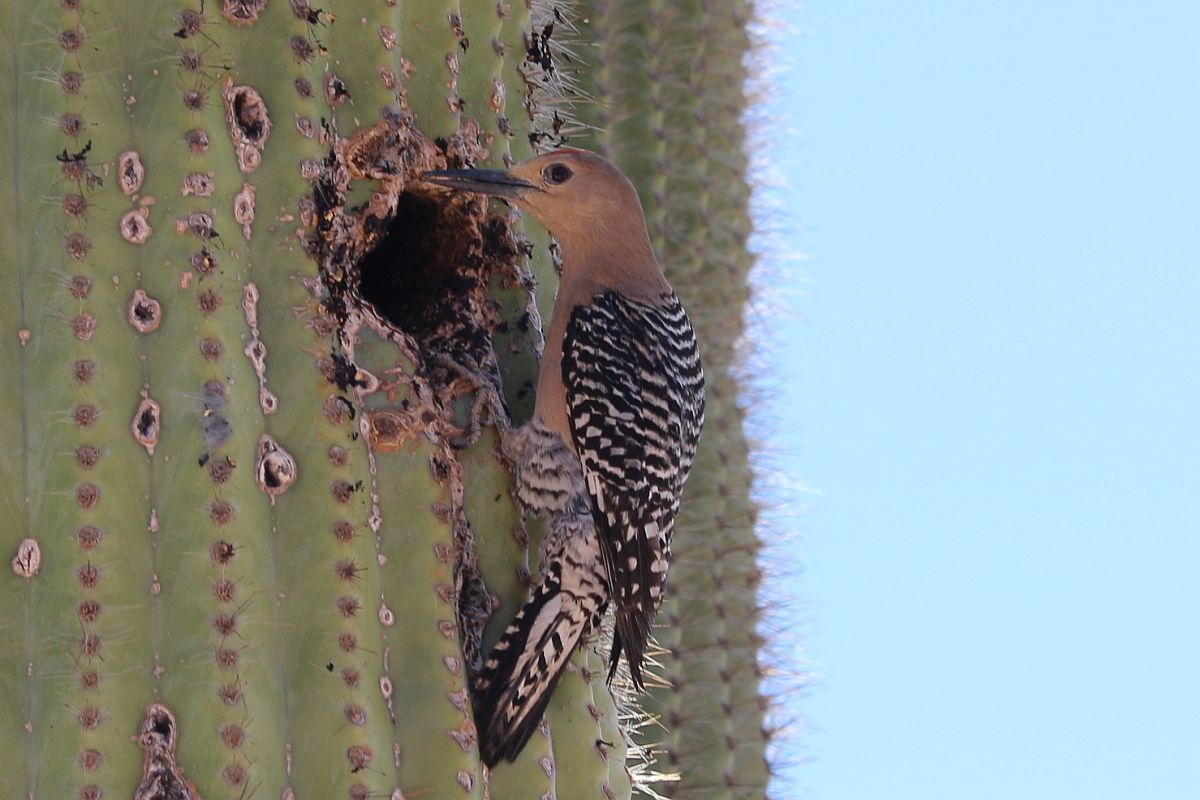
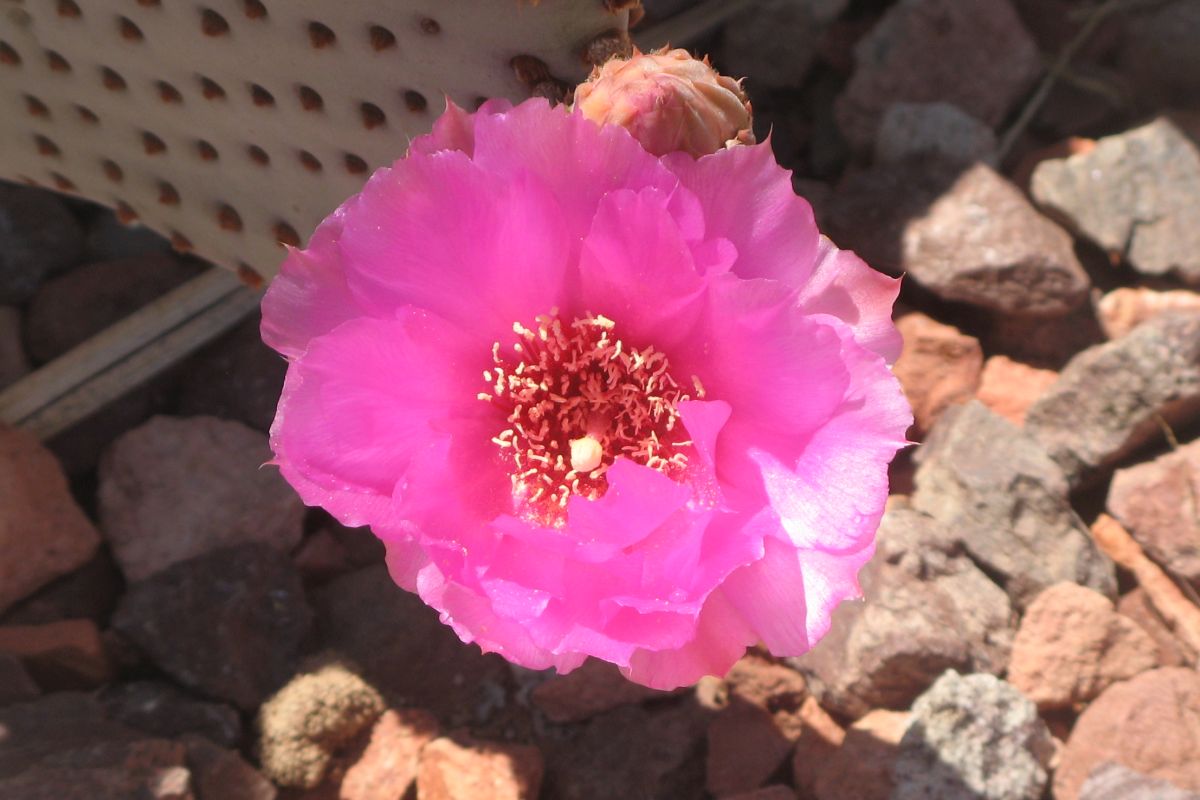
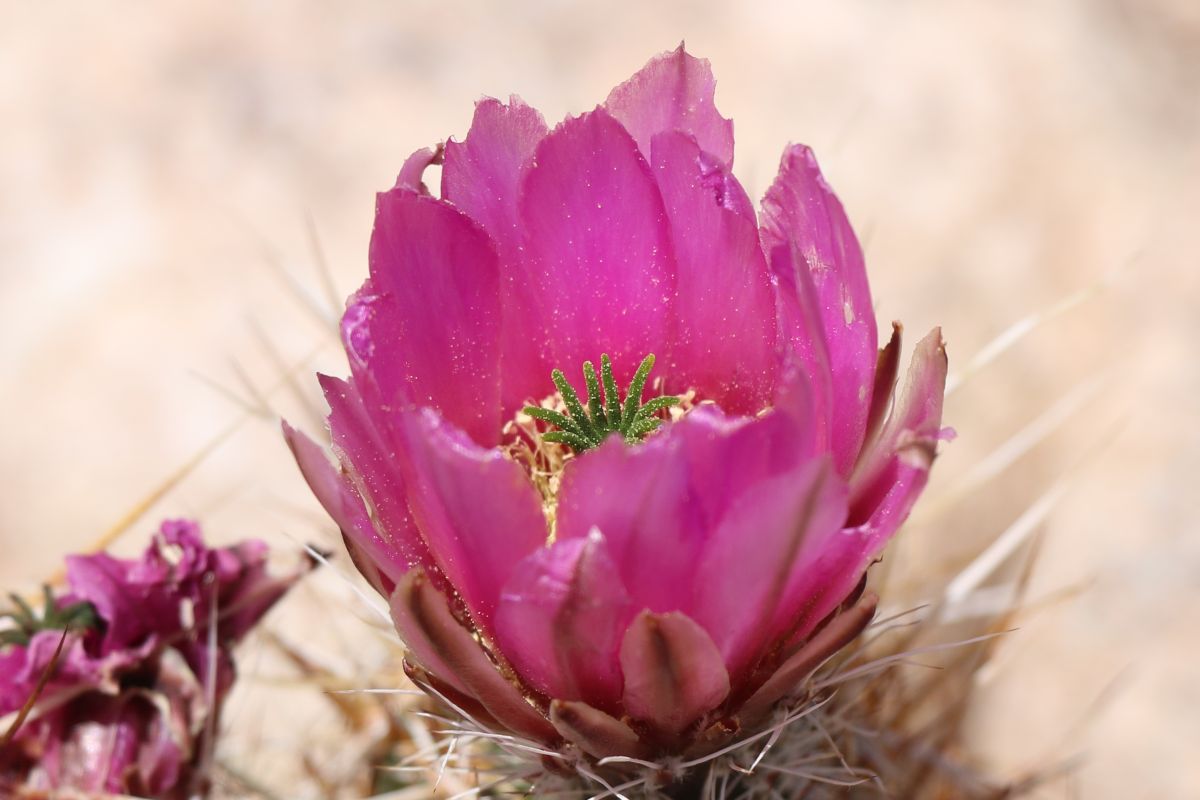
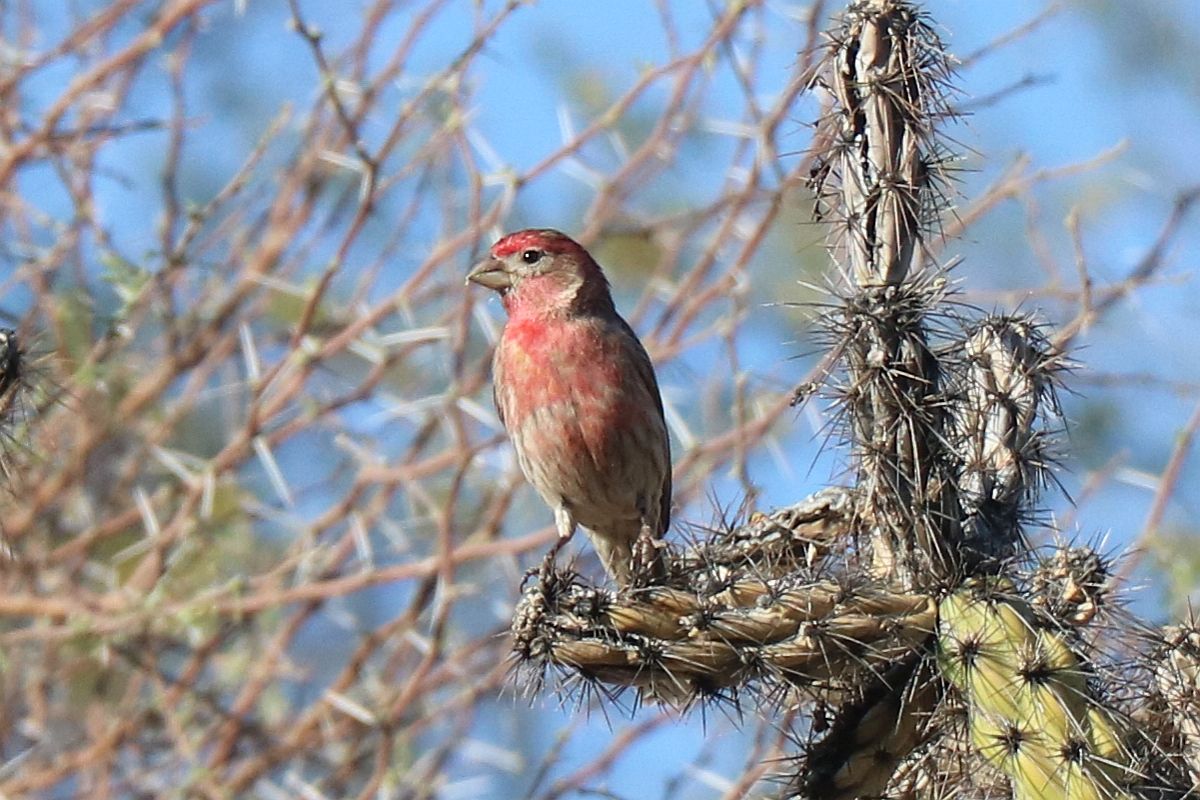
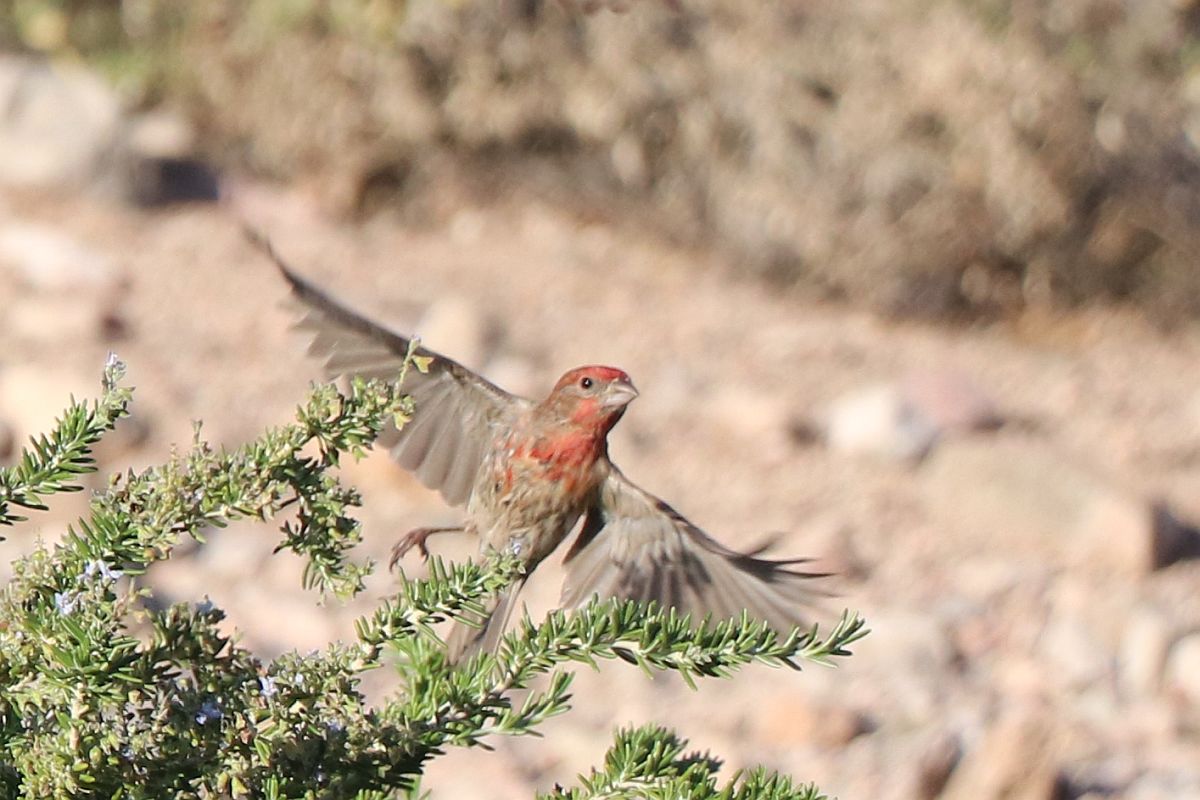

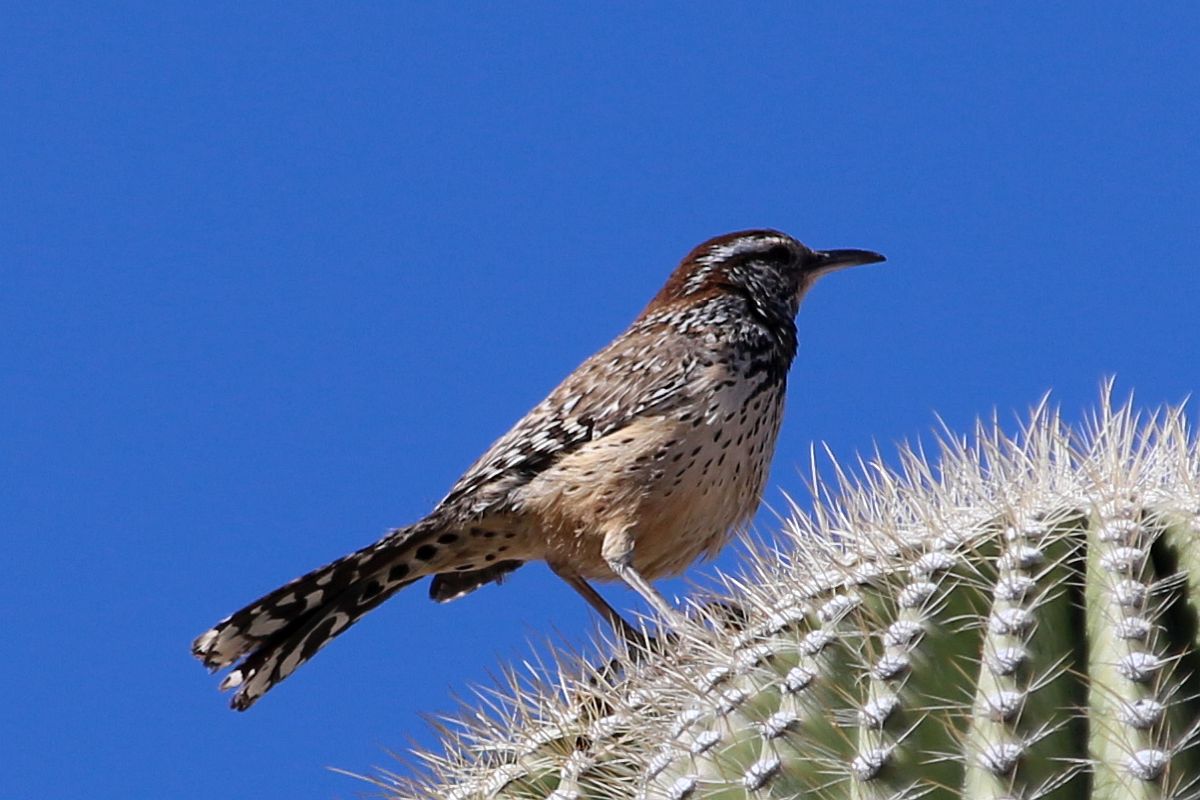
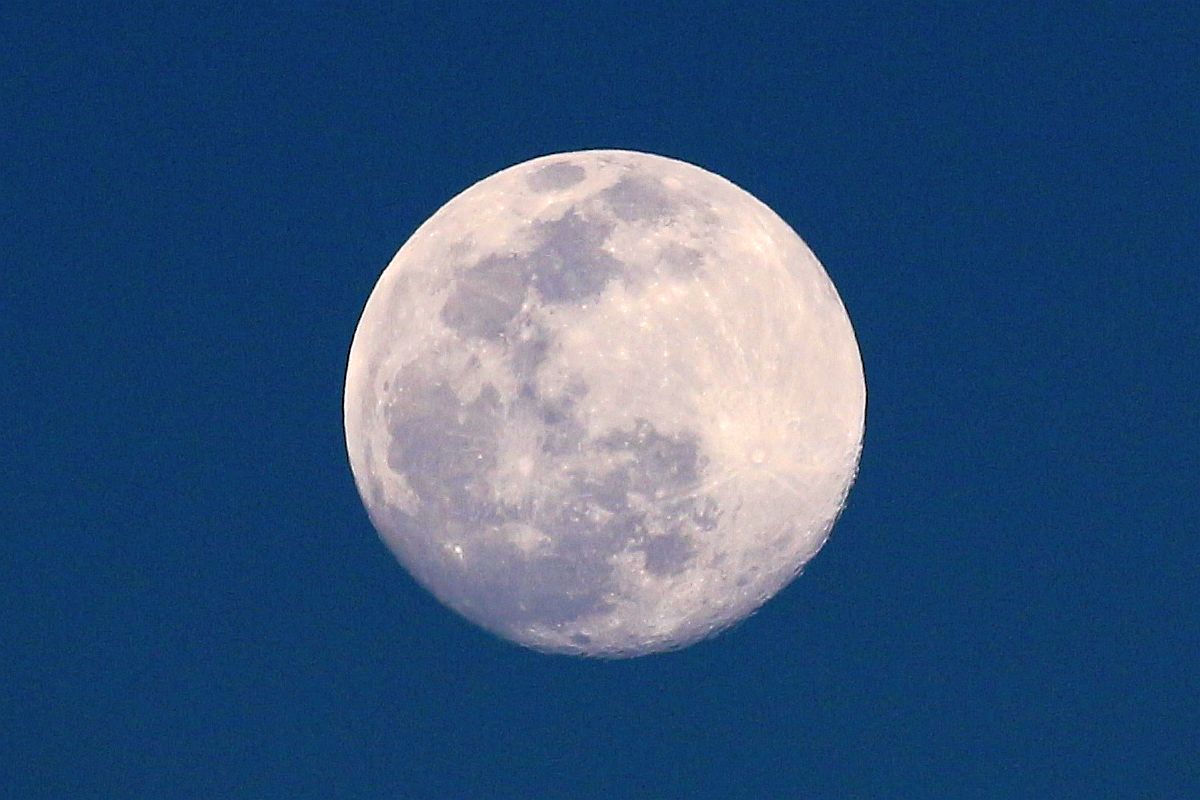


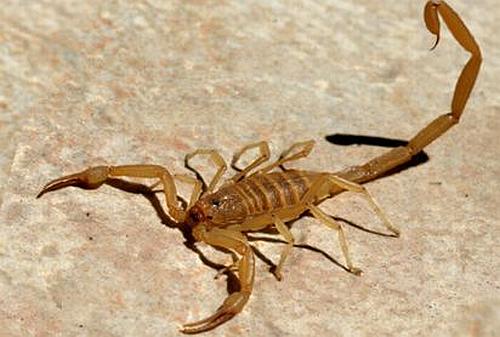 I just killed one of these in the garage this evening. They like to come out in monsoon season and infest under your “stuff” piled here and there. I sprayed Ortho all over the garage and at the entrance to the house. That particular brand of insect repellent/eradicator has done the trick here since we arrived in Arizona.
I just killed one of these in the garage this evening. They like to come out in monsoon season and infest under your “stuff” piled here and there. I sprayed Ortho all over the garage and at the entrance to the house. That particular brand of insect repellent/eradicator has done the trick here since we arrived in Arizona.